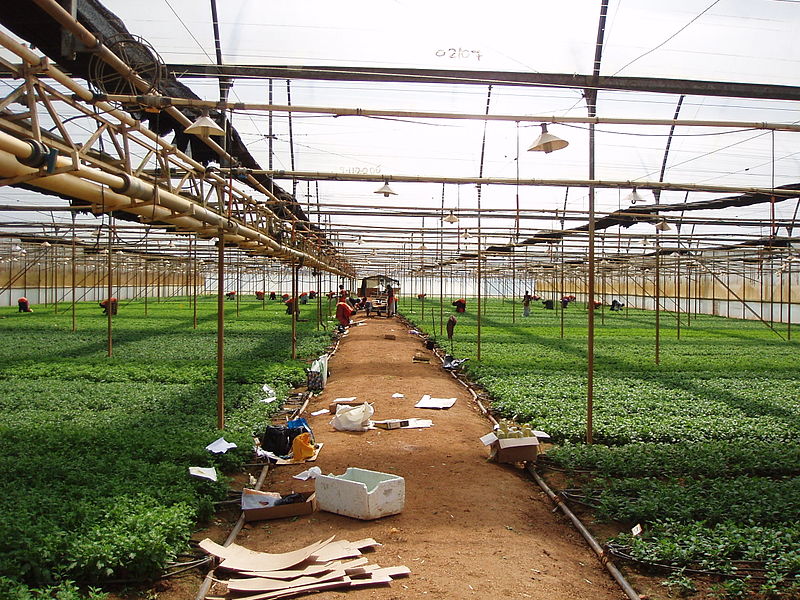In 2015, the World Economic Forum ranked water as the global risk with the greatest potential to impact economies over the next 10 years. So what are companies doing to assess and manage these risks – and could their efforts benefit or worsen the livelihoods for rural people?
The first part of this question was addressed at a GreenBuzz lunchtime presentation on 2 March, by Tilmann Silber and Naomi Rosenthal from South Pole Group and Dr Julian Kölbel from ETH Zürich, entitled ‘Water Management Beyond the Fence: Holy Grail or Wishful Thinking?’
For a company that operates, say a factory, mine or plantation, water can be thought of as managing risks ‘within the fence’ over which they have, more-or-less, direct control, and those ‘outside the fence’, over which they have limited control and influence. Risks within their own sites can be managed through process and site design, good engineering, sound operating procedures and staff behaviours. However, all companies need water in some form, at particular times in particular quantities and qualities and for that they are dependent on the wider environment, climate and water resources. Equally, these companies can impact the water resources available to others and affect the likelihood and magnitude of water-related risks experienced by others.
So how does a company manage water risks outside their control – beyond their perimeter fence – and are they doing it?
This was the research that was presented at this session. The three researchers looked at available data disclosed under the CDP Water Programme 2015 (with which South Pole Group work on evaluating the disclosed water management practices of companies) from which they got 336 responses from 63 companies in 57 countries who are involved in Textiles, Mining, Food and Beverages, Tobacco and construction materials. The analysis presented didn’t differentiate between high and low income countries.
What they found was that only 35% of water risks were found just within the fence (completely under company control), the remainder being either totally outside or a mix. Despite the importance of beyond-the-fence risks, the study found that corporate water management focused on inside-the-fence activities, with little pre-emptive or pre-competitive collaboration between companies and little concrete action, beyond information gathering and relationship building. This could be interpreted as either necessary preparation steps for future action, or just re-active engagement, as for many companies this area of corporate water management is still quite new.
So what has this got to do with rural water supply? As it turns out: quite a lot. For example, the UPGro Gro for GooD project, led by Oxford University and partners, is looking at the interactions between a titanium mine, a sugar plantation and the surrounding rural population, all of whom rely on the same aquifer in Kwale, south Kenya. How these companies manage their water risks can have some huge impacts or benefits, for the surrounding population.
Through Payment for Watershed Services (or Payment for Ecosystems Services), a company – or collaboration between government and private sector – may enter win-win arrangements where catchment residents are incentivised and rewarded for protecting the water and soil resources upstream of the company’s land area or water intake.
Furthermore, many of the people living near a company area may be employed directly, or indirectly, by it. So it is in the company’s interest to have a healthy, productive workforce – and this might be through improved water, sanitation and hygiene. Equally, no business wants to face a cholera or ebola outbreak that forces a complete shutdown of operations.
The flipside of managing risks outside the fence is that a company may decide to capture as much of the resource as possible to bring it within the fence. An example might be to build a reservoir or to drill deeper, bigger boreholes and have bigger pumps than surround farms and community supplies. But doing that is likely to create new risks – in India, Coca Cola got into hot water when it was accused of drying out nearby wells. The social unrest, conflict with authorities and reputational damage led to bottling plants being forced to close in Kerala in 2004, in Uttar Pradesh in 2014 and refused permission to build a new site in Tamil Nadu in 2015. However, elsewhere, Coca Cola have engaged to tackle broader catchment and WASH issues, through the Replenish Africa Initiative (RAIN) (not to be confused with RAIN Foundation!).
Therefore, companies can’t hide behind their fences. They need to reach out and collaborate – and not in a superficial Public Relations-driven way.
This is all fairly common sense, so why did the South Pole study find so little tangible beyond-the-fence activity? Perhaps a lot comes down to trust and integrity: if companies are going to invest in catchment protection, they will want some certainty that the measures will work and they are not just feeding corruption. Trust-building takes time and patience, from all sides. Promises need to be fulfilled, communicated and felt by those involved. However, the increasingly volatile challenges presented by flooding, droughts, pollution, political instability and land degradation means that is unlikely that everyone can be kept happy all of the time.
So in an environment with imperfect information, how do companies, governments and citizens manage these water risks? These are some of the challenges, but also opportunities of water security, which were highlighted in a GWP/OECD report last year ‘Securing Water, Sustaining Growth’. RWSN hasn’t been active in this discussion and interface between the corporate sector and rural communities, but through the REACH programme, there is an exciting opportunity to start this conversation and work towards practical solutions.
This article originally appeared on the Rural Water Supply Network blog

